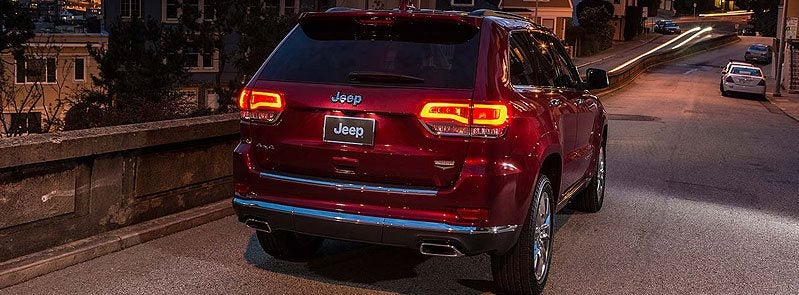There’s not much that can stop a Jeep. Since Jeep’s inception, its heart and soul has yearned for adventure and excitement. And let’s face it, the many improvements available on Jeeps today have only taken things to higher heights and deeper depths. There just aren’t many places you can’t go in Jeep.
But There are Some Places You Really Shouldn’t Go
Recently, there have been several videos making the rounds – including some that have gone viral – of people trying to drive their Jeeps underwater, with varying degrees of success. While offroading always presents challenges, deep water presents some challenges that Jeeps – and, more importantly, Jeep drivers — just aren’t designed for. Driving your Jeep underwater presents the possibility of permanently damaging your Jeep, losing it altogether or, worst of all, getting yourself or your passengers hurt or killed.
Don’t Get Us Wrong… It CAN be Done
In fact, there have been Jeeps designed to tackle an underwater environment. But there weren’t your run-of-the-mill Jeep (OK, OK, no Jeep is really run-of-the-mill, but these were even less run-of-the-mill).
In 1952, embroiled in the Korean War and facing the need for a vehicle that could handle itself underwater for short periods during amphibious landings and river crossings (both of which were important tactical options during that conflict), the US Army called for a Jeep that could go above and beyond – OK, technically, below and beyond – the typical call of duty. And Jeep delivered. Equipped with a special waterproofed engine compartment and a snorkel/snorter system, these amphibious Jeeps were designed to take the battle to the North Koreans in ways previously impossible.
Before they could be made in any significant number, that conflict ended (or technically was put on indefinite hold). In the meanwhile, vehicles that were better equipped for the specific tasks have been designed, limiting the need for Jeeps equipped with snorkel/snorter systems.
So Why Weren’t They Made Commercially Available…
Frankly, there’s a reason such an incredibly cool feature never ended up in too many civilian hands – crossing a deep river or driving off the beach into the ocean in a Jeep, even one designed to do so, carries a number of inherent dangers with it. There are some risks that are acceptable to ask soldiers to take when the mission requires it that are not as appropriate for civilians. This is a concept that every soldier understands. Had the Army made widespread use of submarine Jeeps, they would have trained their operators and, hopefully, the passengers. Making that sort of training available to civilians is problematic, especially when you have no way of guaranteeing that the Jeeps won’t eventually find their way into the hands of people looking for a thrill (something we wholeheartedly encourage in a Jeep) without proper safety precautions (something we don’t encourage).
Factors that Make Deep Water Crossing Unadvisable
It’s easy to get feeling nigh unto indestructible in a Jeep, especially once you’ve experienced all the places they can go. It’s easy to get into the mindset that you’re willing to try anything in your Jeep. But deep water crossing is not a good idea. In fact, if you’re not absolutely sure that the water you’re crossing is shallow enough to be within the limits of what your Jeep is set up for, it’s best not to try it.
Deep river? Leave it alone. Ocean? C’mon, you know better than that. Bridge out? With the buoyancy that a strong current can generate, you’d be surprised at just how little water it takes to lift a vehicle off the bottom… and when your vehicle starts to float, it’s going to go where the current takes it until enough water gets in to sink it — and possibly you with it. There’s no amount of traction or torque in the world that can help you when your wheels are completely spinning in the water. Caution should even be used in shallower bodies of water, as wet, sandy (or otherwise soft) beds are easy to get stuck in, even for a Jeep.
So, How Deep Is Too Deep?
The important thing is to know the specific limits of your Jeep. A Trail Rated Jeep Wrangler is designed to be able to ford up to 30-inches at slow (5 mph) speed in 4WD Low. Other Jeeps, especially with custom modifications, have different limits. A general rule is that if the water is over the bottom of the bumper, it’s too high. While fording, you want to keep your eyes out for big rocks, which can create bigger problems when fording than on terra firma. Once you’ve started crossing, keep the Jeep moving forward slowly. Don’t gun it and don’t stop. Not sure what your Jeep will do or need advice on how to best handle any given offroading situation? Your Jeep dealer is the first person you should ask. It’s virtually guaranteed they’ll either know or know someone who does.





![[Facebook]](https://www.chryslerdodgejeepramofcolumbia.net/blogs/1020/wp-content/plugins/bookmarkify/facebook.png)
![[LinkedIn]](https://www.chryslerdodgejeepramofcolumbia.net/blogs/1020/wp-content/plugins/bookmarkify/linkedin.png)
![[Twitter]](https://www.chryslerdodgejeepramofcolumbia.net/blogs/1020/wp-content/plugins/bookmarkify/twitter.png)
![[Yahoo!]](https://www.chryslerdodgejeepramofcolumbia.net/blogs/1020/wp-content/plugins/bookmarkify/yahoo.png)
![[Email]](https://www.chryslerdodgejeepramofcolumbia.net/blogs/1020/wp-content/plugins/bookmarkify/email.png)



